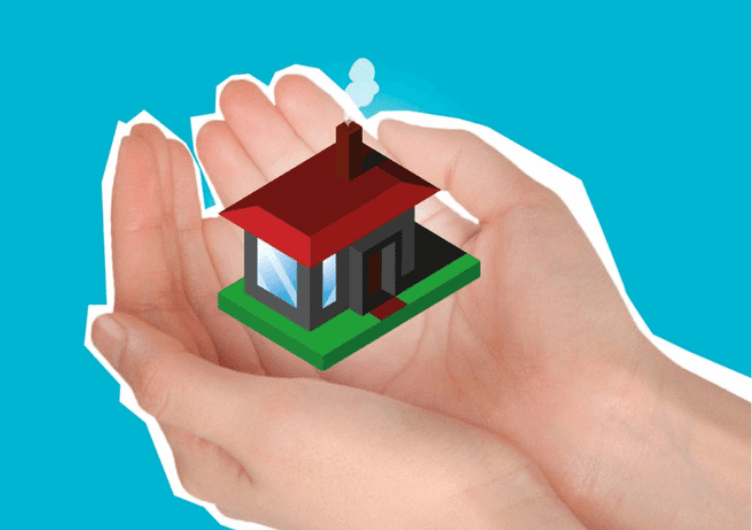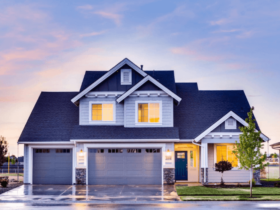Homeowners Insurance will compensate you If an incident covered under your policy damages or destroys your home or personal items.
It will also cover you in some cases if you injure someone else or damage property.
Homeowners insurance has three main functions:
- Repair your house, yard, and other structures.
- Repair or replace your personal belongings.
- Cover personal liability if you held legally responsible for damage or injury to someone else.
Homeowners insurance coverage is not required by law, but if you have a mortgage, your lender will require you to insure the home to protect its investment.
Even if you do not have a mortgage, home insurance is almost always a wise purchase, which gives you both property and liability coverage.
What does Homeowners insurance cover?
It is almost impossible to make generalizations about what a typical homeowners insurance policy is. Know about What Is Personal Lines Insurance?
While there are general provisions from one policy to another, exactly what is covered may vary from state to state and based on the type of policy you choose.
But more specifically, a homeowners insurance policy only covers hazards that are specifically listed as events covered in the policy.
If a certain disaster is not listed as a covered event, you will not be able to claim that it should happen.
Some of the more common hazards include the following:
- Fire and smoke damage.
- Weather-related damage, such as wind damage or hail.
- Water damage from internal sources, but not from flooding.
- Theft of personal property.
- Vandalism.
- Damage caused by snow or ice on the roof (such as a collapse).
- Damage from civil disturbances.
- Explosions (like gas explosions).
- Damage caused by motor vehicles or aircraft.
Most homeowner’s insurance policies will cover damage to landscaping, fencing, and even remodeling. This coverage is usually equal to 10% of your total policy amount.
There is usually a provision that will provide you with temporary living expenses if your home is damaged to the point that you cannot live in it.
The insurance company will reimburse your living expenses for the time the house is repaired.
Finally, homeowners insurance policies typically provide liability coverage in the event that you, a member of your family, or a third party, are injured on your property.
This also extends to someone being bitten by your dog, which is why insurance companies exclude such coverage if you have a breed of dog that is considered particularly aggressive, such as pit bulls.
What Homeowners insurance doesn’t cover
There are some general disasters that will not be specifically covered by a specific policy.
Flood and earthquake insurance are the most common examples.
If you live in an area that is determined to be prone to either hazard, then you will need to get a separate policy for each.
But where these become complicated if either the threat strikes a property that is not in the flood or earthquake zone.
For this reason, it may be advisable to add flood or earthquake coverage to a regular homeowners insurance policy. Since the property is not located in the danger zone, the premium will be extremely low. But in the event that either disaster arises, you will be covered.
Another very important exclusion is damage that results from the neglect of the homeowner.
For example, if your roof has not been replaced in 40 years, and has been destroyed in a violent storm, the insurance company may dismiss your claim based on the fact that roof destruction is primarily a storm. Was the result of neglect instead.
Unfortunately, it is not possible that your home can cover every possible disaster that may strike it. And if you can, the policy will be prohibitively expensive.
Policies also typically exclude damage from other causes, such as:
- Flooding, including drain and sewer backup.
- Earthquakes, landslides, and sinkholes.
- Infestations by birds, vermin, fungus, or mold.
- Wear and tear or neglect.
- Nuclear hazard.
- Government action, including war.
- Power failure.
Types of Homeowners insurance
1. HO-1 Basic form (uncommon)
HO-1 is a limited, bare-bones policy that mortgage companies no longer offer. It only covers 10 potential losses (compared to a more standard 16) and does not include liability.
2. HO-2 – Broad form
An expanded form HO-2 policy covers more than HO-1 – it covers the replacement cost of your home and the cash value of the personal property.
But it is a “named hazards” policy, which means it only covers 16 types of damages. And like HO-1 it does not add liability coverage.
3. HO-3 – Special form (most common)
This is what most single-family homeowners get. This is the minimum level of coverage required by most mortgage issuers, and unless you have an extremely high-value home or high-risk location, it’s probably all you need.
HO-3 policies are “all-risk” meaning that they will provide housing coverage after almost any harmful cause unless the cause listed in the policy is an “exclusion” (such as an earthquake, flood, or Neglect).
Personal property coverage, however, is limited to “designated crises”. Liability and medical coverage are included, as well as additional living expenses in case you are required to evacuate your home after a covered incident.
4. HO-4 – Renters insurance form
If you are renting or leasing a house or apartment, you will get an HO-4 policy. It comes with designated-risk coverage, personal property, and liability at replacement cost. Since you are not the owner of the building, you do not need housing coverage.
5. HO-5 – Comprehensive form
This is the highest level of coverage, and as you have probably guessed, the most expensive.
An HO-5 policy has some HO-3 policy, such as “all-risk” replacement cost coverage for both housing and personal property, and higher coverage limits for expensive items. Can still be named exclusion.
Your insurer is more likely to offer HO-5 policies for new homes in low-risk areas, especially for buyers with good credit. If you can afford the extra security and you have valuable items that you want to cover completely, then an HO-5 might be worth it.
6. HO-6 – Unit owners form (condo insurance)
An HO-6 policy covers a condo or co-op. Like HO-4 renters insurance policies, HO-6 includes personal property and liability. Depending on how much coverage your condo association has for the building, you may or may not need housing coverage.
7. HO-7 – Mobile home form
An HO-7 policy slightly modifies the HO-3 policy for mobile or manufactured homes, including trailers or any “small houses” you can take on the street. Insurance prescribes cover all risks, while personal belongings are covered if they are damaged by designated hazards.
8. HO-8 – Modified coverage form (uncommon)
If your home is old or built from old, at-risk materials, it is difficult to ensure replacement costs, which can be much higher than market value.
An HO-8 policy has been prepared for these homes, offering name-perils cash price coverage for housing and personal property.
Historic homes, which are intentionally abandoned or close to their original condition, typically have HO-8 coverage.
READ ALSO: How to Choose an Insurance Company
How much does Homeowners insurance cost?
According to the National Association of Insurance Commissioners, in 2017 an average annual premium was $ 1,211, or about $ 150 per month. But it is a nationwide average, and the volume can vary widely by state and city. You can pay as little as $ 400 or as much as $ 3,000 per year.
Home insurance acts a bit like life insurance; If you are more at risk, you will pay more. Insurance underwriters use an acquaintance called COPE: construction (building materials), occupancy (those who live there), protection (from fire and other natural disasters), and exposure (risks inherent to your location).
To determine the insurance value of your home, insurers usually consider:
- What it would cost to rebuild your home.
- Your home’s age, condition, and other characteristics.
- Distance from your home to the nearest fire hydrant.
- Your city’s fire protection rating.
- And Your claims history and the claims history of others in your neighborhood.
- Your coverages, limits, and deductible.
- Items that pose a major injury risk, such as pools or trampolines.
If you live in a big city or anywhere with a dense population, you probably pay more than the average, because the value of the house is higher. And insuring a house is expensive in any state with a track record of natural disasters.
The cost also varies depending on the insurance company you choose. For example, some companies specialize in high-value homes, and they naturally charge high prices.
READ ALSO: Best Life Insurance Companies in India
READ ALSO: What Is an A-Rated Insurance Company?









